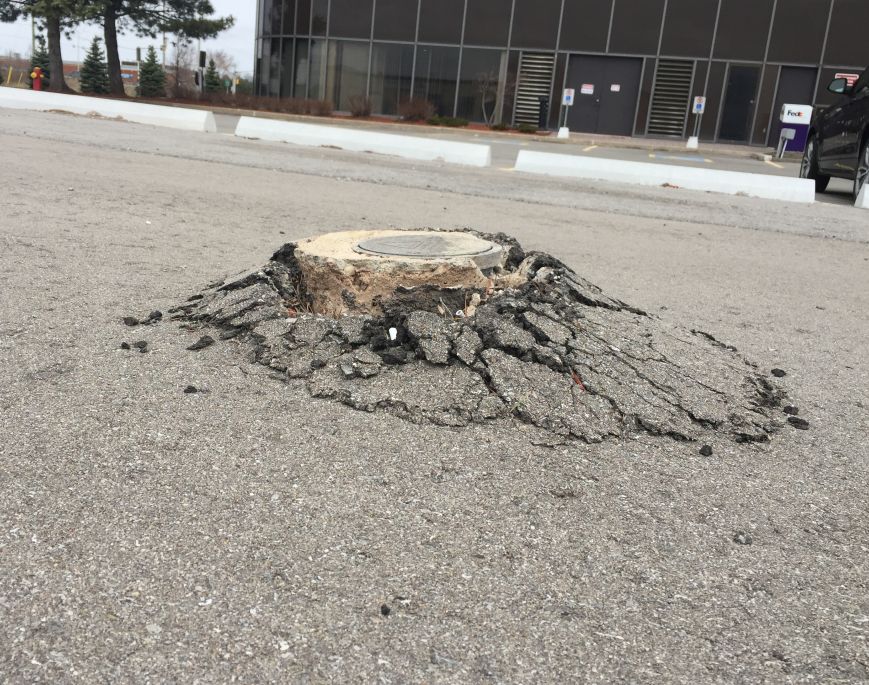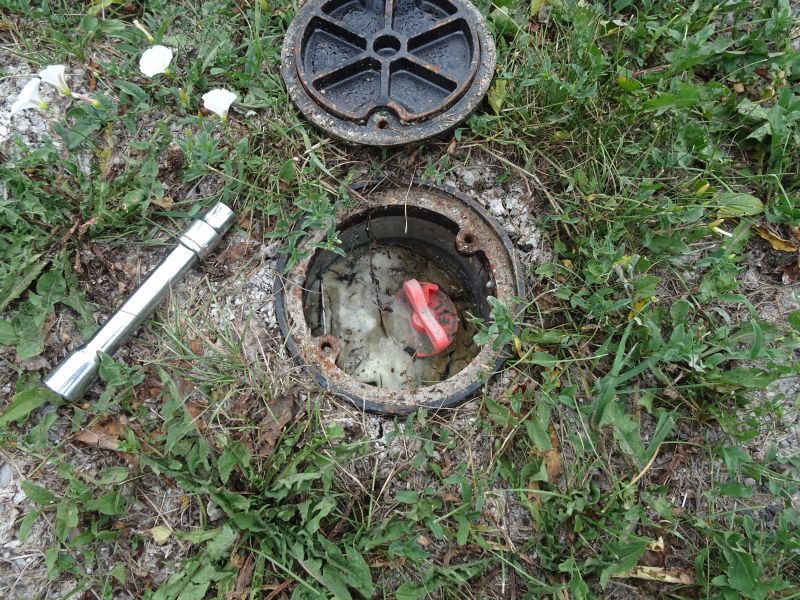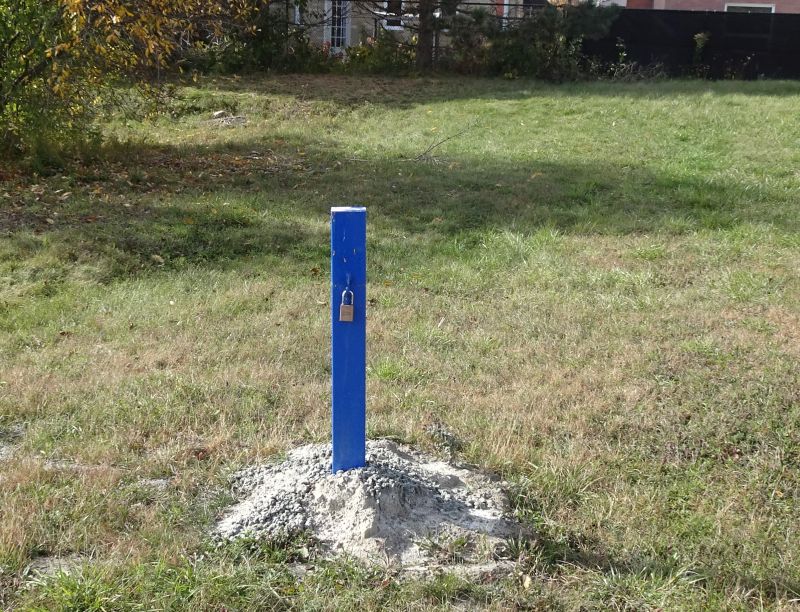Since you are in the site investigation sector, you likely notice flushmount casings for groundwater monitoring wells. Whether it be at project sites or even when going about your daily life, such as fuelling up at a gas station, you see them.
When you come across them, are they in good shape? Or were they poorly installed?
Flushmounts are commonly found heaving, making them no longer flush with the surrounding ground surface. They can result in tripping hazards and are subject to further damage from snow shovelling and plowing when they are on concrete or asphalt.
Images depicted below showcase common installations…

What will happen when the snow plow comes?

Although this was likely flush when it was installed, this is what happened once the water soaked into the holeplug.

So much holeplug that it bubbled right up to the J-plug.
Usually, these issues are caused by backfilling with too much bentonite or concrete in the borehole area, around the well and flushmount near the surface. In fact, the Ontario Test Holes and Dewatering Wells – Requirements and Best Management Practices recommend the same method that leads to the problems.
See below, Figure 12-24 from the provincial document. It shows the entire well backfilled with sealant to the ground surface surrounding the flushmount. Additionally, they show sealant placed inside the base of the flushmount. This method contributes to the issues depicted in the above photos.

To avoid problematic flushmounts, backfilling of the well annulus should end once you reach a depth slightly below the final depth of the flushmount skirt. Doing so allows any water seeping into the flushmount area to drain adequately instead of hydrating and expanding bentonite surrounding the flushmount. There is no danger of surface water entering the screen zone and compromising the well, as the annulus around the riser, above the well screen, has been filled with bentonite.

This isn’t a flushmount, but you can see the same thing happens with aboveground casings.
Do you adequately supervise the well installation process your drillers are undertaking?
When you are having a driller install a well with a flushmount, pay close attention to how they are doing it and help them ensure they are not creating a future problem well.
